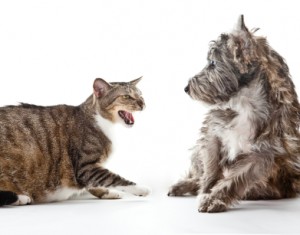 This is the next installment in our animal safety series inspired by my mission to keep pet sitters safer on the job and to keep you safer with pets at home.
This is the next installment in our animal safety series inspired by my mission to keep pet sitters safer on the job and to keep you safer with pets at home.
Part 1 – Diseases from Pets to People talked about how to protect yourself from pet diseases. Below we will talk about how to recognize scared or aggressive pets.
Understand Any Pet is a Possible Threat
Even if you have known your pet their whole life, no pet is 100% safe. Scared animals can do serious damage, especially if scared or injured. Always be aware of your pet’s body language.
Resources for Identifying and Handling Aggressive Animals
An excellent book on handling animals safely is “Low Stress Handling, Restrain, and Behavior Modification for Dogs and Cats” by Sophia Yin. Though originally written for veterinarians, it is useful for anyone who wants to handle a scared or stressed pet. It describes how to read animal body language, how to handle animals safely, and how to use positive reinforcement to decrease fear and aggression.
Dr. Yin also has great online articles and videos about aggression:
- Dogs – http://drsophiayin.com/resources/dog_behavior/
- Cats – http://drsophiayin.com/resources/cat_behavior/
Doggone Safe is also an excellent resource for the prevention of dog bites.
The Body Language of Fear and Aggression
It is important to recognize animals that might hurt you. Fearful animals may attack without ever showing purely aggressive signals.
- Ears
- Fearful – May pull ears down, back, and against the head
- Aggressive – Dogs may point both ears directly toward the object of their aggression
- Eyes
- Fearful – Avoid eye contact, hold eyelids wide open, whites of eyes easy to see
- Aggressive – Will often, but not always, stare you down
- Mouth
- Fearful – May yawn or lick their lips
- Aggressive – May bare their teeth
- Noises
- Fearful or Aggressive – Hisses and growls mean “back off, NOW”, remember, not all animals will hiss or growl before attacking.
- Body
- Fearful – Huddle or crouch towards the ground to seem smaller
- Aggressive – Stand straight and stiff to seem bigger
- Fur
- Aggressive – Puff out the hair on back and tail to appear bigger
- Tail
- Fearful – Tuck tail under the body to appear smaller
- Aggression – Both dogs and cats may raise the fur on their tails creating a “bottle brush” tail. Dogs may “flag” their tail as a sign of arousal. Don’t assume a dog with a wagging tail is friendly. Aggressive cats may hold their tails straight down and back.
Examples of Feline Body Language
These pictures were generously provided by Dr. Karen Overall and Elsevier Publishing who gave us permission to use them for non-profit use.
Examples of Canine Body Language
Thank you to Lili Chin who allowed us to use the following image for non-profit use.
In our next entry, we will discuss the basics of handling fearful and aggressive animals safely. Check it out in our next installment.
—–
Please remember that this blog is not a substitute for real-life veterinary advice. Your vet knows you and your pet best and you should talk with them before starting any course of treatment. Seeing, touching, and smelling your pet is essential to making a good treatment plan, none of which I can do from my blog (sorry).
More than anything, I hope these topics will encourage you to take your concerns to your veterinarian and help your pet feel better sooner.

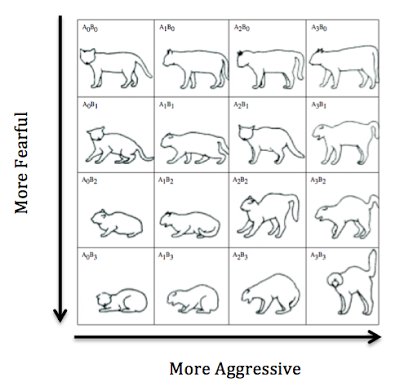
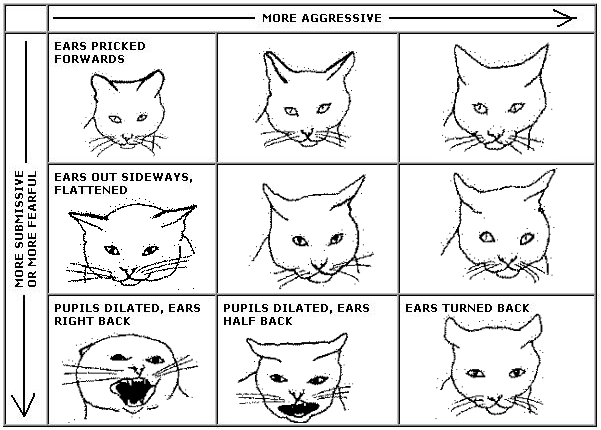
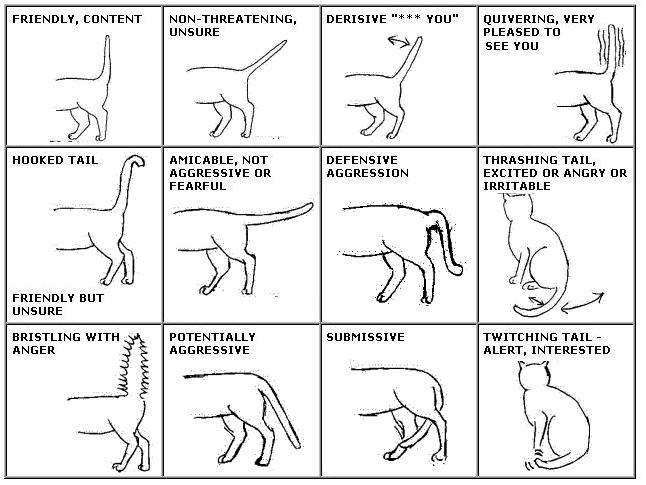
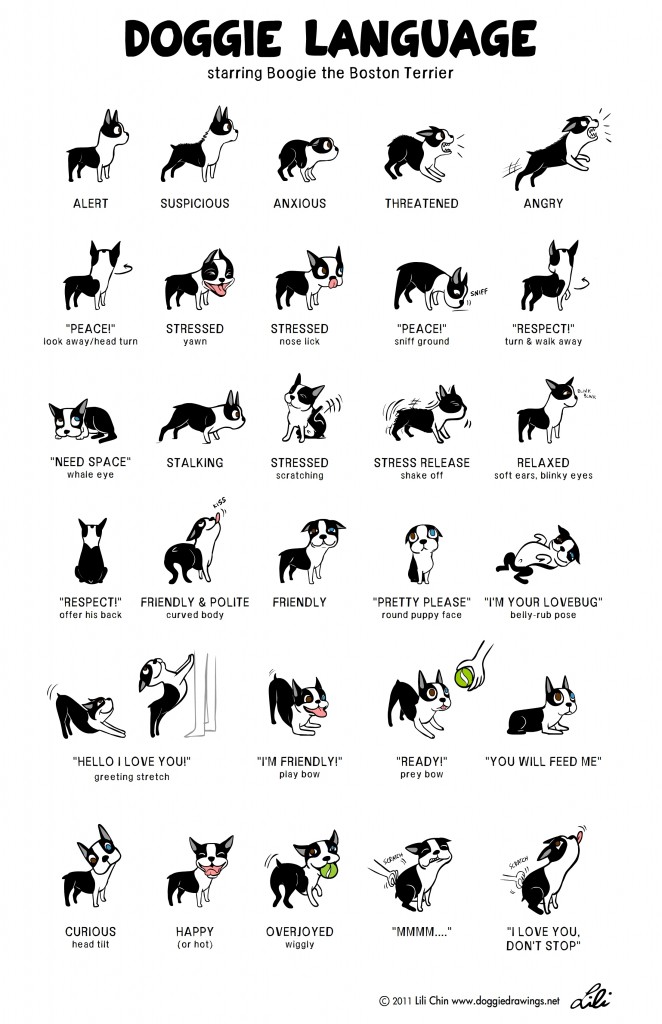

[…] last post (Reading Animal Body Language) discussed how to identify pets that are scared or aggressive. In this installment we discuss how […]